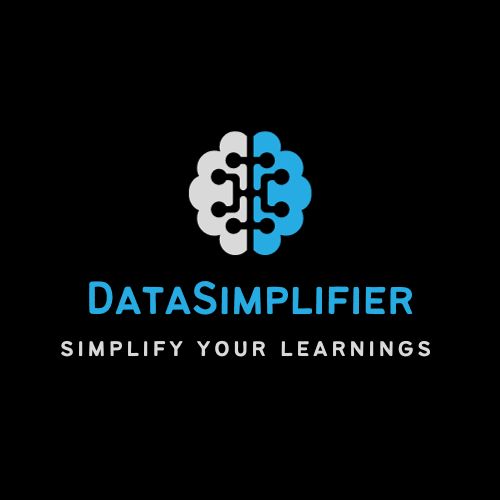Introduction
In recent years India has very quickly been rising to the world’s stage as a data science leader- -thanks to its booming tech industry and many talented workers. The more that businesses see and understand the value of data-driven decision-making, the higher the demand for professional data scientists. For Indian students and professionals interested in taking advantage of this trend, becoming proficient in the most important programming languages for data science can be helpful. These languages, therefore, constitute a mighty set of tools that enable data scientists to run manipulations on the data itself, analyses, and the building of predictive models.

Programming languages are the backbone of data science. Such languages allow professionals to automate some work, analyze the most complex datasets, and thus provide insights that lead to strategic business decisions. With so many choices available, the decision on which language to learn seems like an extremely daunting task. This article tries to demystify that decision by giving readers the best programming languages for data science and why these count.
This massive article will detail the essential programming languages that aspiring data scientists should concentrate on mastering. We will review what each language is exceptionally good at, its current use in industry, and resources available to master these languages by the end of this guide.
Role of Programming Languages in Data Science
It is the tools with which data scientists unlock the full power of data-in all their forms. From data cleaning and statistical analysis to creating machine learning models, data scientists rely on programming languages to take all sorts of things off their plates and free them up to concentrate on really extracting meaningful insights. This is a quality that differentiates successful data scientists from mediocre ones: taking raw data and converting it into actionable intelligence.
Key Programming Languages for Data Science
Python: The Most Important Language for Data Science
Of all the programming languages applied to data science, Python is arguably the most important-so much so that it has turned into a jack-of-all-trades language. It’s clear and easy to read, so both starters and veterans can use it; it is constituted by such an extensive arsenal of libraries, like data manipulation with Pandas, NumPy for the numerical computations, and Matplotlib and Seaborn for data visualization.
Apart from this, in machine learning, Python contributes as its integration is made possible through robust tools of developing and deploying the machine learning model in libraries like Scikit-learn. Additionally, TensorFlow and PyTorch are popular libraries for deep learning applications, making it possible for data scientists to create complex neural networks. The versatility of Python stretches far beyond data science, to web development and automation, making it a skill that any working tech professional needs to possess.
R: A Language for Statistical Analysis
Another important language of data science, R has a reputation of strength in statistical analysis and visualization of data. The packages available for this language were built specifically for data analysis, such as ggplot2 for detailed visualizations and dplyr for efficient data wrangling. Its capabilities will suit mostly statisticians and data scientists with a focus on exploratory data analysis and reporting.
Even though it has a more steeper learning curve compared with Python, its specific features and capabilities make R a first choice for lots of people within the academic and research communities. R proves very resourceful where one requires complex statistical modeling but provides a very comprehensive tool set for advanced statistical analysis.
SQL: Must for Data Manipulation
SQL is an essential tool for data scientists who work intensively with huge datasets residing in relational databases. Because SQL is the standard language for managing and querying data, a data scientist can retrieve, update, or manipulate data extremely efficiently. In the context of tasks involving extract-transformation-load of data from the database, proficiency in SQL becomes essential.

SQL is used in several industries; therefore, knowing this language understood by most is something of a requirement for data scientists. With SQL knowledge, one can deal with big data and merge data from various sources, such as different platforms or databases, thus providing a basis for even more complex analyses and deeper machine learning tasks.
While Python, R, and SQL make up the general primary languages of data science, other languages can still apply to specific applications. Java and Scala are most widely used in big data environments, particularly when it needs processes on top of those frameworks like Apache Spark. Julia is a high-performance numerical analysis language continues to grow as it is fast and efficient with regard to handling complex computations.
For anyone interested in specialization in niche areas of data science, knowledge of use cases of these languages can be very useful. However, these are not as widely used as Python, R, and SQL in the world of data science.
How to Choose the Best Language for Career Purposes
The proper programming language to be chosen depends on the desire of a career and specific demands of the industry where one looks for entry. If your interests lie in the realm of machine learning or AI, then Python is a must because of its huge library support and community resources. If statistical analysis and its visualization are what interest you, then R is the way to go. SQL is for anyone working with databases, handling large volumes of data or performing manipulation on large sets.
It depends on the types of projects one wants to work on and industry standards even personal interest. One would need to be proficient in Python if one wants to be a machine learning engineer because Python has far more libraries in model building and deployment. Otherwise, if an aim is working more in a research-oriented position, they would more likely want to be proficient in R given the statistical advantages it holds.
Being multilingual, with working knowledge of multiple languages is yet another opportunity that could come your way. Most data science roles require end-to-end control over data processing, and knowing SQL to pull data out and Python/R to get the analysis done might put you one step ahead with employers.
Learning Resources for Programming Languages
A great support system to master these languages is amply provided by the extent of resources available online. Here are some of the greatest means of learning and mastering these languages:
Online Courses and Platforms
Coursera and edX: These websites offer deeply technical courses in Python, R, and SQL, often developed by leading universities and institutes. Examples of such learning paths are courses like “Python for Everybody” from the University of Michigan or “Data Science: R Basics” by Harvard University.
Udacity, DataCamp: For real-world, project-based learning and applying data science and analytics, interactive courses are great. Specialized learning tracks, like Data Analyst or Machine Learning Engineer, guide you through what you should learn in an integrated fashion. Books and Reading Material.

“Python for Data Analysis” by Wes McKinney: This book provides very valuable learning on how to manipulate and analyze data using Python. It explains important libraries, such as Pandas and NumPy, with practical examples.
R for Data Science by Hadley Wickham: A must-read, if you are starting to dive into R, it provides full presentation of the data science workflow when using R and its ecosystem of packages.
“SQL for Data Scientists” by Renee M. P. Teate: This book is designed to help data scientists refine their SQL skills, built around using examples for data analysis and business intelligence.
Community and Online Forums
Stack Overflow and GitHub : These are excellent resources that get one help on solving problems while providing code to share projects. Be a part of these communities to learn from others, get codes for coding challenges, and take part in open-source projects.
LinkedIn and Reddit: Being in groups and forums concerning data science, for example, will keep you abreast of the latest industry trends and rub shoulders with professionals in the field. A good place to start would be by subscribing to subreddits such as r/datascience and LinkedIn groups concerning a career in data science .
Telegram Channels and Local Communities
Join Our Telegram Channels: Personalised guidance and resources are available on our Telegram channels that include curated content extraction, job notifications, and learning resources for data science enthusiasts in India. You join these groups and get instant access to a network of peers and mentors.

Local meetups and conferences: Attend local data science meetups and conferences. Attend local data science meetups and conferences. Such forums will further widen your horizon of learning apart from the knowledge gained. Local meetups and conferences give exposure to learn from experts and attend workshops among many professionals who accompany one.
The most important subset of programming language for successful data science mastery encompasses mainly three languages such as Python, R, and SQL. They each have their advantages; being familiar with the strengths of all these languages can help you and can be matched directly to your goals to help construct a robust skill set that addresses the evolving landscape of data science.
We highly recommend you to proceed and get access to all the languages and tools listed in this guide. Whether entering or advancing your career, continuous learning and skill-building becomes inevitable. Take the chance to learn and practice. You will be well-equipped with the challenges of the data-driven world.
As you continue with your learning, we invite you to our Telegram channels for more information and job notifications. That’s all to be in our community. You will get a tight network and exclusive resources. Also, dear reader who has managed to read this article to the very end, little secret – just type your Telegram handle in the comments below, and we’ll send you an invitation link to our premium group on Telegram. There, you’ll be able to share your experience with colleagues and get revelations from the best.
Thanks for taking the time to read this. We have put a lot of effort into creating this ultimate guide so that you’ll get as much knowledge and assurance as you would need to move forward with a fulfilling career in data science. Stay curious, learn more, and don’t hesitate to reach out to our community about anything you need help or guidance with.
Share the post with your friends

1 thought on “Best Programming Languages for Upcoming New Data Scientists”